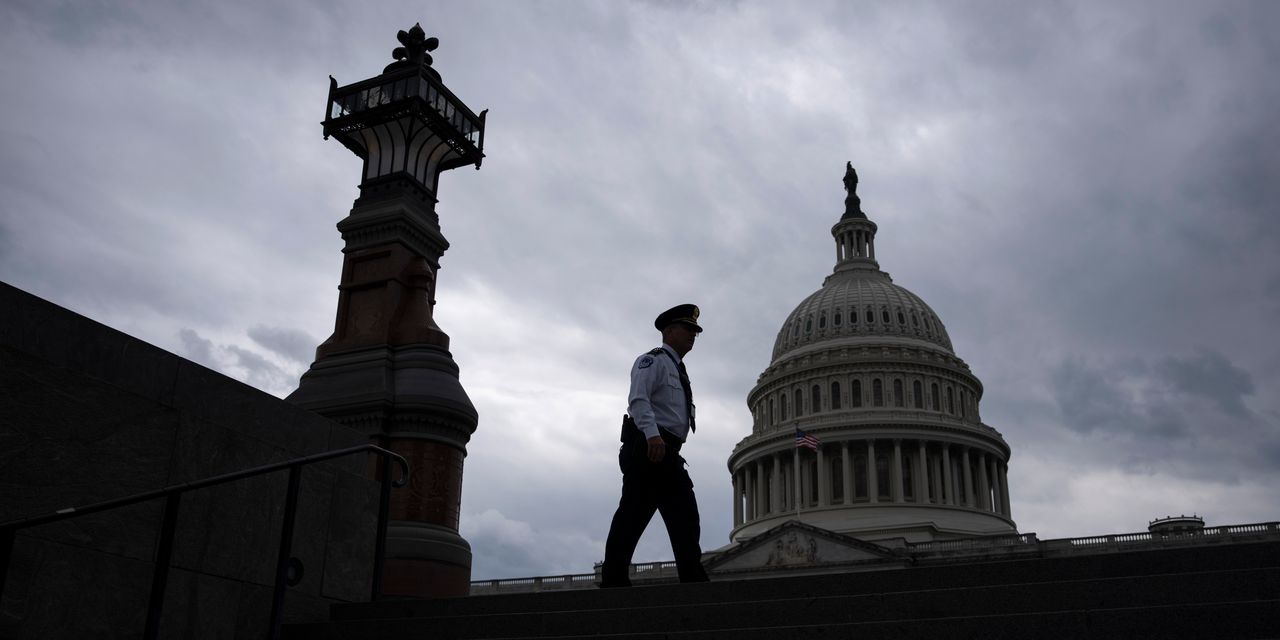The stock market has been relatively sanguine about this whole debt-ceiling drama, a marked difference from the last time the country found itself in the same mess more than a decade ago.
June 1 is the hard deadline that Treasury Secretary Janet Yellen gives for default, though other economists put the date around the 10th.
Still, there’s no deal. And yet Wall Street doesn’t seem flustered at all—or at least not that much. Maybe that’s because the market expects all the talking in Washington—the White House and Congress have been huddling on and off now for the past couple of weeks—will pay off.
But investors, beware. Even an 11th-hour agreement could cause more than a few anxious moments, and even a little grief.
But before we go there, first a rundown of just how bad a default would be. The stock market would almost certainly plunge, dragging with it retirement account values. Social Security and other government benefits that millions of Americans depend on would come to a screeching halt. And there undoubtedly would be irreparable damage done to global faith in the U.S. economic system.
As late as Monday afternoon, President Joe Biden and House Speaker Kevin McCarthy were still trying to agree on how to pay the bills. Early in the day, JPMorgan’s Dubravko Lakos-Bujas sounded the alarm about just how ugly things would get if there wasn’t a meeting of the minds. He wrote the country was approaching a “fiscal Rubicon” and that this casual attitude of investors could lead to “significant equity repricing” if the government defaults.
By contrast, debt markets have been much more sensitive. The
1-month Treasury bill,
which straddles the deadline, is trading at a record 5.718%, surpassing the high of 5.633% set on May 12. The yield is up 0.239 of a percentage point, its largest one-day gain since May 5, showing that investors are demanding increased payout for what they see as rising risk.
Perhaps, though, the most stomach-sinking takeaway from Lakos-Bujas was his thoughts on what could happen to the stock market, regardless of a deal. He wrote that “contentious debates such as the near-default in 2011 should serve as cautionary tales of the equity market disregarding and then violently repricing the risk of a U.S. default.” A dozen years ago, the
S&P 500
slumped some 17% in two key weeks around the default deadline.
There are key differences between now and 2011. Today, monetary policy is tightening, the money supply is collapsing, inflation is higher, and stock valuations are richer. Because of those changes, a government default would heighten the likelihood of a selloff in riskier assets.
And, Lakos-Bujas wrote, a deal is no guarantee of smooth sailing. He predicted much greater market instability than right now appears priced in and warned that he expects any deal “to negatively impact federal spending and for a likely contentious budget-negotiation process later this year.”
In addition, the fact that a debt-ceiling raise could turn out to be more of a short-term solution means the country might have to endure another round of negotiations next year—with all the same obstacles, and the added pressure of a presidential election.
That leaves the market with two big worries, he wrote.
The first is that there is the “potential for a violent risk-off move in equities as we get closer to the projected x-date of early June without a broadly supported resolution.” In other words, the market may suddenly wake up to the danger all at once as the clock runs out, leading to major losses.
The second is that there could be federal spending cuts for some of the Biden administration’s key priorities as a result of a comprehensive debt-ceiling deal, or federal budget negotiations in the fall.
To hedge the risk of market swings around the approaching deadline, Lakos-Bujas recommends buying call spreads—a strategy in which investors buy and sell two call options at different prices simultaneously, which limits losses—on the
Cboe Volatility Index
(VIX). In terms of positioning themselves ahead of possible changes in government spending, he recommends paring ownership of stocks with exposure to green/climate change, and electric vehicles.
While politicians playing with fire is nothing new, it’s worth remembering that this particular tactic is.
“The extreme politicization of the debt ceiling has been a relatively recent development starting in 2011, which also happens to be the most contentious debt-ceiling raise in modern history, which ultimately ended with an S&P downgrade of the U.S. sovereign credit rating,” Lakos-Bujas wrote.
Death and taxes may have always been inevitable, but this kind of political wrangling wasn’t.
Write to Teresa Rivas at [email protected]
Read the full article here













